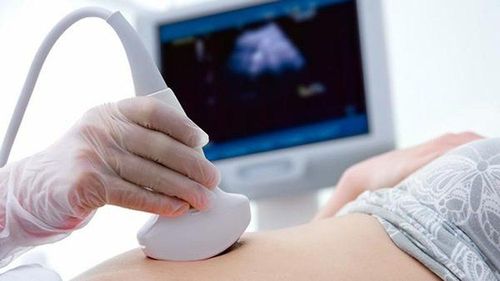Fetal head circumference is an important indicator, helping to assess fetal development, and at the same time detect abnormal signs of the baby right from the time it is in the mother's womb. This helps to limit the risk of birth defects in children, especially microcephaly.
1. Fetal head circumference index by gestational week
Fetal head circumference is an important index, denoted as HC (Head Circumference), which helps to assess the development of the fetus through each gestational week, thereby helping to detect early abnormalities that the fetus may have.
The doctor will assess the head circumference index as well as other important indicators of the fetus based on certain gestational weeks, to monitor the development of the baby:
- First gestational week - week 4: at this time, the fetus is still a very small embryo.
- Weeks 4-7 of pregnancy: The fetal indices that need to be noted during this period usually include the diameter of the gestational sac and the crown-rump length. In the sixth week of pregnancy, the diameter of the gestational sac ranges from about 14 - 25 mm. The ultrasound results will show the length of the fetus's crown rump in the seventh week of pregnancy.
- From the 12th week onwards: at this time, the circumference of the fetus's head, the length of the femur, and the biparietal diameter of the fetus are accurately determined.
In general, these indices are often different in each fetus, some fetuses have shorter femurs or larger head circumferences. The genetic characteristics of the parents more or less influence these differences. If the fetal head circumference indexes are within the allowable range, it is considered to have no signs of abnormalities.
2. Fetal ultrasound measurements

Fetal ultrasound measurements can show how your baby is growing and help detect fetal abnormalities early. During pregnancy, a variety of ultrasound measurements can be performed. Fetal ultrasound measurements may include crown-rump length (CRL), biparietal diameter (BPD), femur length (FL), head circumference (HC), occipital diameter (OFD), abdominal circumference (AC), and femur length (HL), as well as estimated fetal weight (EFW).
Most pregnant women will have a baseline ultrasound at least around 18-20 weeks of gestation. However, medical associations do not recommend routine ultrasounds during pregnancy. Level II ultrasounds are typically more time-consuming and extensive than Level I ultrasounds, but this depends on the particular medical facility.
Ultrasound during pregnancy can be performed as a “routine” ultrasound, an anatomical ultrasound, usually between 18 and 20 weeks of pregnancy, or it can be performed for specific reasons that often depend on the stage of pregnancy. Ultrasound measurements are useful throughout pregnancy to determine the due date and to find out if the baby is developing normally.
3. Is an abnormal fetal head circumference a problem?
A fetal head circumference measurement can tell a lot about the baby’s health. One of the most important is helping to detect birth defects, such as microcephaly.

If the baby's head circumference is smaller than expected, this is a real concern. This condition has many different causes, including:
- Slow fetal growth
- Genetics: familial microcephaly
- Chromosomal abnormalities
- Genetic abnormalities
- Miller-Dieker Syndrome (MDS)
- Endocrine abnormalities, such as hypopituitarism or hypothyroidism
- Callosal syndrome
- Premature craniosynostosis
- Single ventricle
- Fetal infections
- Corpus callosum abnormalities
- Central nervous system abnormalities
Microcephaly is associated with a baby having a small head and brain, often with severe intellectual disability and seizures, as well as a reduced life expectancy. The typical incidence of microcephaly is about 1 in 7,000 births and has increased more than 20-fold in certain areas of Brazil.
4. How is microcephaly diagnosed in the fetus?
The fetal head circumference is measured during pregnancy by ultrasound and then compared statistically to others of the same fetal age. Microcephaly is usually diagnosed when the fetal head circumference falls below 2 or 3, or even more, standard deviations.
Here are some diagnostic tests that can help find the underlying cause of an abnormally small fetal head circumference, including:

- Amniocentesis: This method is performed by using a needle to collect amniotic fluid. The sample will then be tested to see if there is any infection or chromosomal abnormalities. However, this is an invasive procedure that can cause the risk of premature birth for the pregnant woman, so it is considered the last diagnostic option.
- MRI: also known as magnetic resonance imaging. This is a method that helps doctors assess the health of the fetus through detailed images inside the mother's body. From there, it helps doctors detect early abnormalities in the structure of organs and provide appropriate treatment. In addition, this is also one of the ways to check the brain structure of fetuses at risk of small head circumference.
To arrange an appointment, please call HOTLINE or make your reservation directly HERE. You may also download the MyVinmec app to schedule appointments faster and manage your reservations more conveniently.
Reference source: srhr.org; babymed.com













